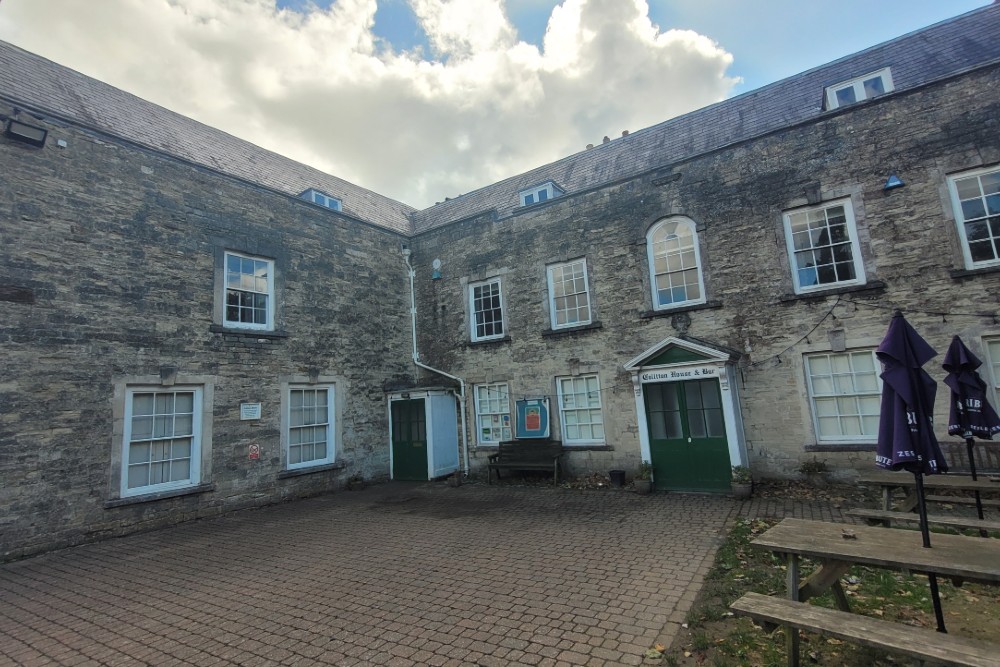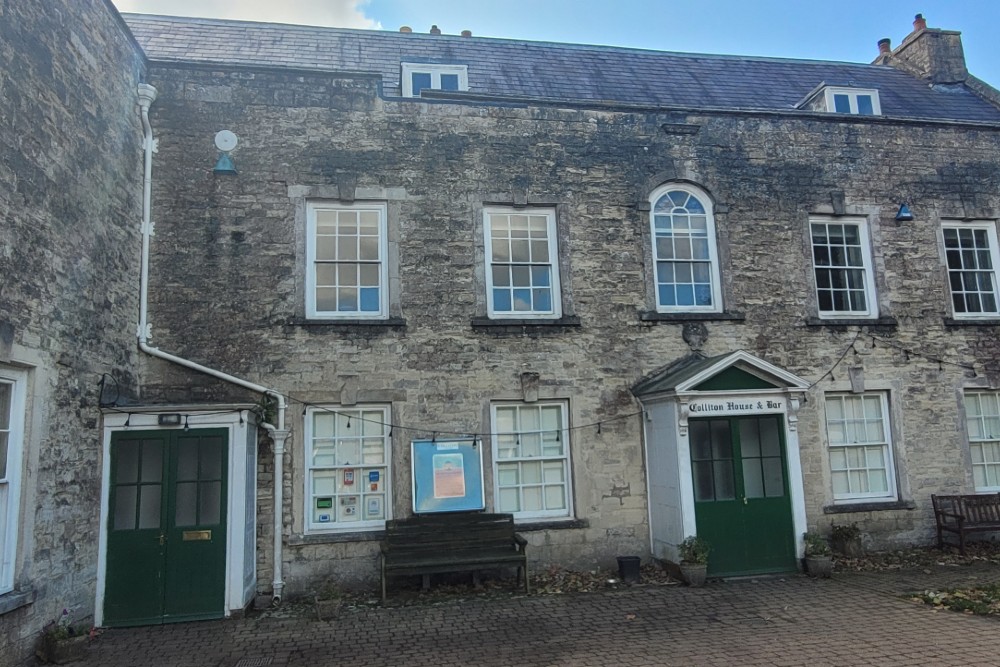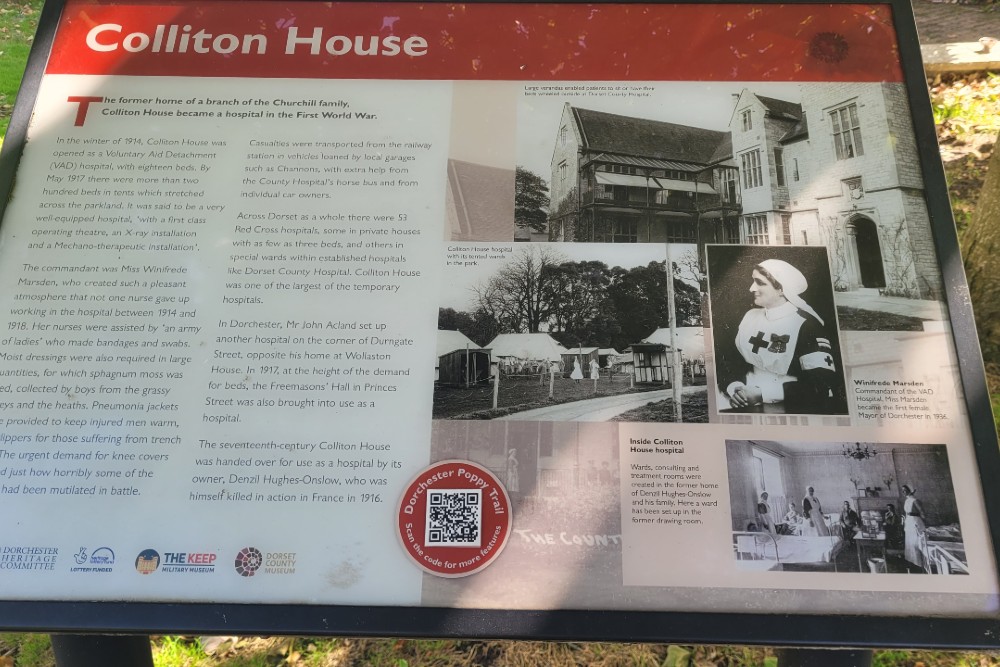Voluntary Aid Detachment Hospital Dorchester
"The former home of a branch of the Churchill family, Colliton House became a hospital in the First World War . In the winter of 1914, Colliton House was opened as A Voluntary Aid Detachment (VAD) hospital, with eighteen beds. By May 1917 there were more than two hundred beds in tents which stretched across the parkland. It was said to be a very well-equipped hospital, 'with a first class operating theatre, an X-ray installation and a Mechano-therapeutic installation'.
The Commandant was Miss Winifrede Marsden who created such a pleasant atmosphere in the hospital between 1914 and 1918. Her nurses were assisted by 'an army of ladies' who made bandages and swabs. Moist dressings were also applied in large quantities, for which sphagnum moss was used, collected by boys from the grassy valleys and heaths. Pneumonia jackets were provided to keep injured men warm, and slippers for those suffering from trench foot. The urgent demand for knee covers revealed just how horribly some of the soldiers had been mutilated in battle.
Casualties were transported from the railway station in vehicles loaned by local garages such a Channons, with extra help from the County Hospital's horse bus and individual car owners.
Across Dorset as a whole there were 53 Red Cross hospitals, some in private houses with as few as three beds, and others in special wards within established hospitals like Dorset County Hospital. Colliton House was one of the largest of the temporary hospitals.
In Dorchester, Mr John Acland set up another hospital on the corner of Durngate Street, opposite his home at Wollaston House. In 1917, at the height of the demand for beds the Freemason's Hall in Prince's Street was also brought into use as a hospital.
The seventeen-century Colliton House was handed over for use as a hospital by it's owner Denzil Hughes-Onslow, who was himself killed in action in France in 1916,"
Denzil Hughes-Onslow, Major. 6th Bn. Dorsetshire Regiment. Died 10 Jul 1916. Aged 52. Buried at Meaulte Military Cemetery, France.
His brother:
Arthur Hughes-Onslow. Major. 10th (Prince of Wales's Own Royal) Hussars. Died 17 Aug 1914. Aged 5. Buried at Ste. Marie Cemetery, Le Havre, France.
Both men had served in Sudan. Egypt and South Africa before retiring from the Army and at the outbreak of WW1, despite their ages, they were among the first to re-enlist.
Do you have more information about this location? Inform us!
Source
- Text: Sharky Ward/Information Board
- Photos: Anthony (Sharky) Ward
Nearby
Museum
Point of interest
- Corn Exchange Dorchester - Dorchester
- German Prisoner of War Camp Dorchester - Dorchester
- P.O.W. Hut Dorchester - Dorchester
Monument
- War Memorial County Hall Dorchester - Dorchester
- Memorials Dorset County Hall Dorchester - Dorchester
- War Memorial Holy Trinity Church - Dorchester
Cemetery
- Commonwealth War Graves Fordington Cemetery - Dorchester
- Grave of Trooper Thomas Warr - Dorchester
- Commonwealth War Graves Dorchester Cemetery - Dorchester






